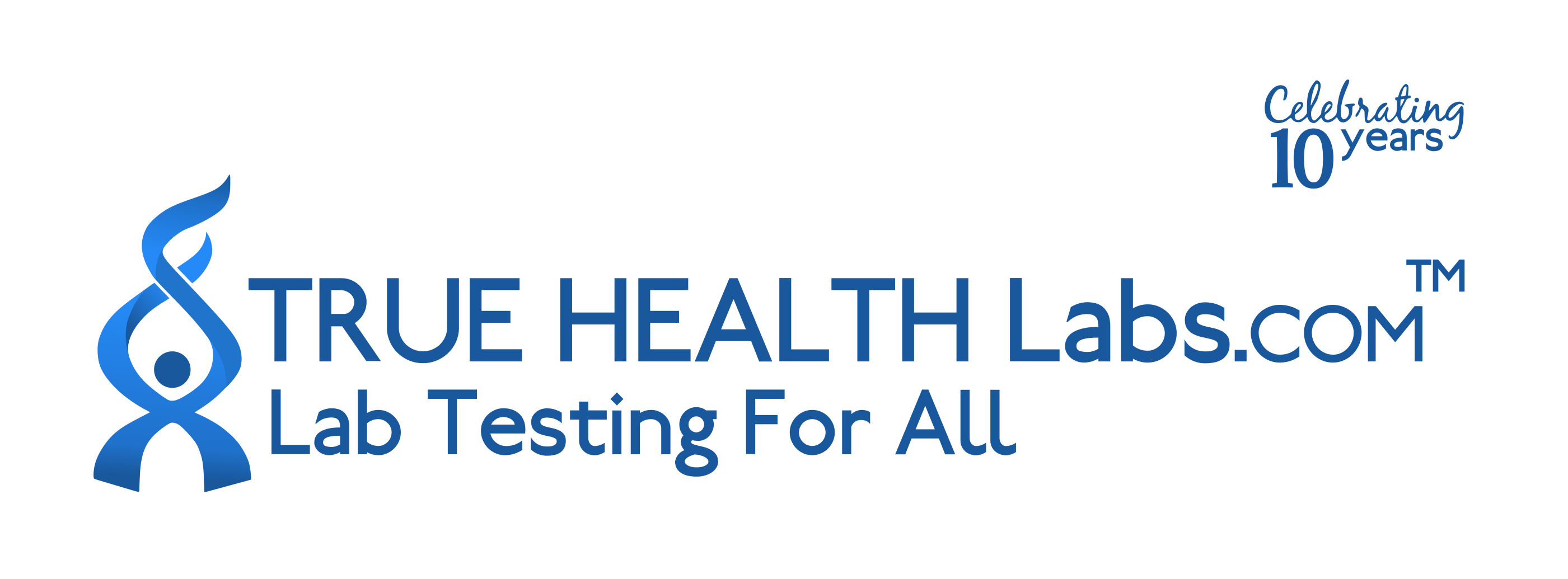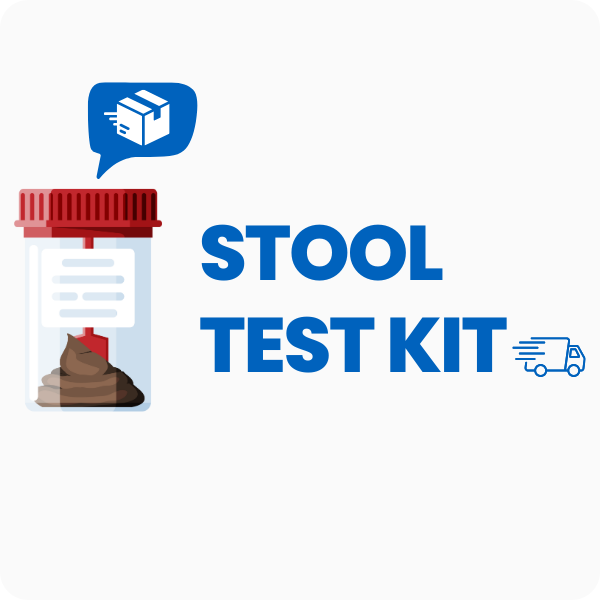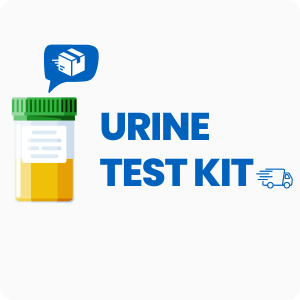Ordering the Comprehensive GI-Effects | DNA Stool Test | 1-Day Collection | Canada
The Comprehensive GI-Effects | DNA Stool Test | 1-Day Collection is designed to help identify imbalances in gut bacteria, digestive function, and markers of inflammation. This test uses advanced DNA technology to detect a wide range of gut microbes, including bacteria, yeast, and parasites, as well as markers for digestion, absorption, and immune response. Interestingly, this test can also identify drug resistance genes in harmful bacteria, which can help guide treatment options.
Ordering this test provides specific benefits:
- Detects bacterial, yeast, and parasitic imbalances using DNA analysis for higher detection rates.
- Measures markers for inflammation, such as calprotectin and eosinophil protein X, to help distinguish between different digestive conditions.
- Assesses pancreatic function and nutrient absorption to pinpoint digestive enzyme issues.
- Identifies short-chain fatty acids, which are linked to colon health and cancer prevention.
- Provides drug and natural agent sensitivity results for targeted treatment planning.
Who Should Consider Advanced Gut Microbiome and Digestive Function Testing
People who experience ongoing digestive discomfort, such as bloating, gas, constipation, or diarrhea, may benefit from this test. For example, someone who has tried multiple diets and supplements for persistent abdominal pain but still has symptoms could use this test to find out if gut bacteria or inflammation are contributing factors.
Ordering may also be helpful in these situations:
- Frequent changes in bowel habits without a clear cause
- Unexplained nutrient deficiencies despite a balanced diet
- Recurring yeast or candida overgrowth symptoms
- Long-term use of antibiotics or medications that affect gut flora
- Unexpected skin issues, such as eczema or rashes, that may be linked to gut health
This test is recommended for those who want to identify the root cause of digestive symptoms, measure inflammation, and check for hidden infections or imbalances. Delaying this test could mean missing early signs of gut issues that may become harder to address over time.
How to Prepare for Digestive and Microbial Stool Analysis
Fasting is not required for this stool test, but you should follow the collection instructions provided in your kit for the most accurate results. Always go by any specific guidance from your doctor or healthcare practitioner to ensure your sample is collected and shipped correctly.
Labs Included When Ordering Your Comprehensive GI-Effects | DNA Stool Test | 1-Day Collection | Canada
| Test Name | Reference Range | Significance | Low and High Levels of Comprehensive GI-Effects | DNA Stool Test |
|---|---|---|---|
| Calprotectin | <50 | Calprotectin is a protein released during inflammation in the digestive tract. It helps distinguish between irritable bowel syndrome and inflammatory bowel disease. | High levels mean active inflammation, possibly from IBD or infection.
Low levels mean little to no inflammation in the gut. |
| Eosinophil Protein X (EPX) | <60 | EPX is an immune marker that rises with allergic or inflammatory reactions in the gut. It can help identify food sensitivities or allergic responses. | High levels mean possible allergic inflammation or parasitic infection.
Low levels mean minimal allergic or immune activity in the gut. |
| Fecal sIgA | 510-2040 | Secretory IgA is an antibody that protects the gut lining. It reflects the immune system’s response to bacteria, yeast, and food antigens. | High levels mean increased immune response to gut antigens.
Low levels mean weakened gut immune defense. |
| Short Chain Fatty Acids (SCFA) Total | 7.0-13.0 | SCFAs are produced by gut bacteria and support colon health. They help prevent inflammation and may lower colon cancer risk. | High levels mean increased fermentation, possibly from excess fiber or bacterial overgrowth.
Low levels mean reduced beneficial bacteria or poor fiber intake. |
| n-Butyrate Concentration | 1.8-4.2 | Butyrate is a key SCFA that nourishes colon cells and supports anti-inflammatory processes in the gut. | High levels mean increased fermentation or bacterial imbalance.
Low levels mean less support for colon lining and possible inflammation. |
| Beta-Glucuronidase | <15 | This enzyme is produced by gut bacteria and can affect hormone metabolism. High levels may increase toxin reabsorption. | High levels mean increased risk of toxin or hormone reabsorption.
Low levels mean less risk of reabsorbing toxins. |
| Pancreatic Elastase | >200 | Pancreatic elastase measures digestive enzyme output from the pancreas. It helps identify enzyme insufficiency and malabsorption. | High levels mean normal or increased enzyme output.
Low levels mean pancreatic enzyme deficiency and possible malabsorption. |
| Fecal Fat (Total) | <6 | Measures undigested fat in stool. High levels suggest fat malabsorption or pancreatic enzyme issues. | High levels mean fat malabsorption or enzyme deficiency.
Low levels mean normal fat digestion. |
| Products of Protein Breakdown (Total) | 0.5-2.5 | Shows how well proteins are digested. High levels may indicate poor protein breakdown or bacterial overgrowth. | High levels mean poor protein digestion or excess bacteria.
Low levels mean normal protein digestion. |
| HpSA – H.pylori | Negative | Detects Helicobacter pylori, a bacteria linked to ulcers and stomach inflammation. Positive results may require treatment. | High levels mean active H. pylori infection.
Low levels mean no detectable H. pylori. |
| Campylobacter spp | Negative | Campylobacter is a bacteria that can cause diarrhea and abdominal pain. Detection helps guide treatment for gut infections. | High levels mean active Campylobacter infection.
Low levels mean no Campylobacter detected. |
| Clostridium difficile | Negative | C. difficile is a bacteria that can cause severe diarrhea, especially after antibiotics. Detection is important for managing gut infections. | High levels mean active C. difficile infection.
Low levels mean no C. difficile detected. |
| Shiga toxin E. coli | Negative | This toxin-producing E. coli can cause severe gut symptoms. Detection helps prevent complications and guide treatment. | High levels mean presence of toxin-producing E. coli.
Low levels mean no Shiga toxin E. coli detected. |
| Fecal Lactoferrin | <7.25 | Lactoferrin is a marker for white blood cell activity in the gut. It helps identify active inflammation or infection. | High levels mean active inflammation or infection.
Low levels mean no significant inflammation. |
| Cryptosporidium | Negative | Cryptosporidium is a parasite that can cause diarrhea and stomach cramps. Detection is important for treating persistent gut symptoms. | High levels mean active Cryptosporidium infection.
Low levels mean no Cryptosporidium detected. |
| Giardia lamblia | Negative | Giardia is a parasite that can cause watery diarrhea and fatigue. Detection helps guide treatment for gut infections. | High levels mean active Giardia infection.
Low levels mean no Giardia detected. |
| Entamoeba histolytica | Negative | This parasite can cause severe gut symptoms and liver complications. Detection is important for targeted treatment. | High levels mean active Entamoeba infection.
Low levels mean no Entamoeba detected. |
| Yeast/Fungi | Negative | Detects overgrowth of yeast or fungi, such as Candida, which can cause digestive symptoms and discomfort. | High levels mean yeast or fungal overgrowth.
Low levels mean no significant yeast or fungi detected. |
| Commensal/Opportunistic Bacteria (e.g., Bacteroides, Prevotella, Lactobacillus, Bifidobacterium, etc.) | Within lab-specific ranges | These bacteria are part of the normal gut flora. Their balance supports digestion, immune function, and protection against harmful microbes. | High levels mean possible bacterial overgrowth or imbalance.
Low levels mean reduced beneficial bacteria or dysbiosis. |
| Pathogenic Bacteria (e.g., Citrobacter, Escherichia coli, etc.) | Negative | Pathogenic bacteria can cause infections, diarrhea, and inflammation. Detection helps guide treatment and prevent complications. | High levels mean active infection or overgrowth.
Low levels mean no pathogenic bacteria detected. |
| Drug and Natural Agent Sensitivity (e.g., Ampicillin, Ciprofloxacin, Berberine, Oregano, etc.) | Sensitive/Resistant | Shows which drugs or natural agents are effective against detected bacteria. Helps guide targeted treatment for gut infections. | High resistance means less effective treatment options.
Low resistance means more treatment options available. |
| Fecal Occult Blood | Negative | Detects hidden blood in stool, which may signal inflammation, infection, or other gut issues. | High levels mean possible bleeding or inflammation in the gut.
Low levels mean no hidden blood detected. |
| Color, Consistency | Normal | Assesses stool appearance, which can reflect digestion, absorption, and gut health. | High abnormality means possible digestive or absorption issues.
Low abnormality means normal stool appearance. |
Reference ranges may change slightly as labs update their methods and guidelines.
Comprehensive GI-Effects | DNA Stool Test | 1-Day Collection FAQ
Is there Comprehensive GI-Effects | DNA Stool Test | 1-Day Collection testing near me?
This is a home test kit, so you can collect your sample locally and use the draw location link for nearby drop-off options. For those with ongoing digestive symptoms, having a convenient collection site makes it easier to get tested without added stress or travel.
How do I interpret the test results?
While your treating physician should review your results, we also offer a one-on-one test results review with our clinical team to help you understand your findings and next steps.
What is the cost of the test?
The price includes standard shipping to you and return shipping to the lab, but draw fees may apply. Ordering this test can help you address digestive symptoms more quickly by identifying specific causes and guiding targeted solutions.
How often should I retest?
Retesting is usually recommended every 6-12 months, especially if you are monitoring treatment progress or ongoing symptoms. Regular testing helps track changes in gut bacteria, inflammation, and digestive function for more effective management.
How accurate is the test?
This test uses multiplex PCR DNA analysis, which offers high sensitivity (98%) and specificity (97%) for detecting gut microbes and markers. TrueHealthLabs.com partners with CLIA-certified and CAP-certified laboratories to uphold rigorous testing standards for dependable results.
Important Notes
- You will be responsible for the shipping costs.
Medical Review Board
Reviewed by Jeff Donohue M.D. from Body Logic and Brady Hurst DC, CCCN. Written by True Health Lab’s team of editorial health contributors.
Disclaimer: This information is for educational purposes only and not intended as medical advice. Consult your healthcare provider for personalized guidance.
Why Customers Trust True Health Labs – What People are saying
Also rated 4.6 out of 5 based on 3452 ShopperApproved reviews- See all TrueHealthLabs.com reviews.









